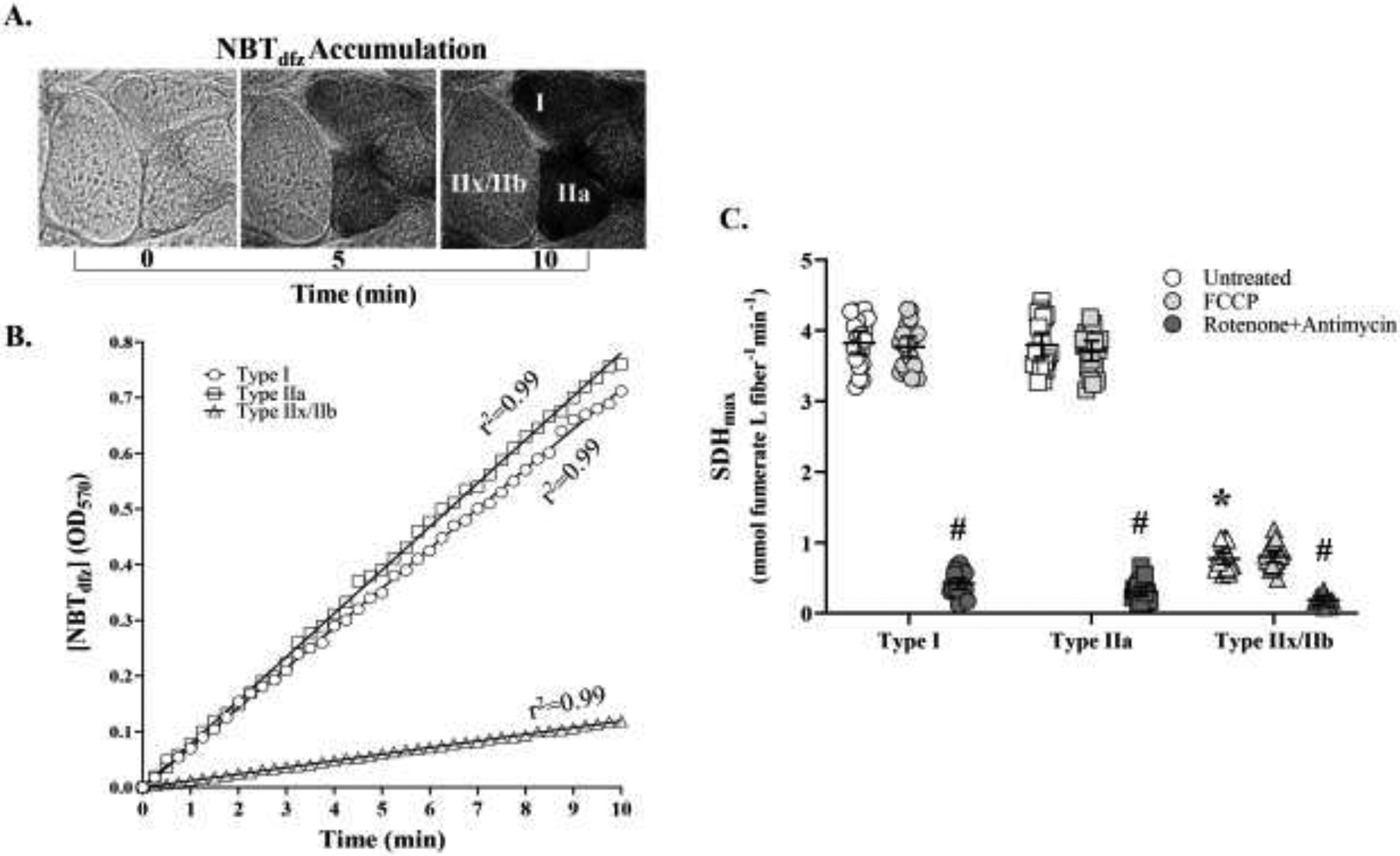Figure 3:

In the SDH reaction, the acccumulation of [NBTdfz] in muscle fibers was measured every 15 s across a 10 min period as the change in OD at 570 nm. A. Pictomicrographs show a representative example of the change in OD in type I, IIa and IIx/IIb DIAm fibers at 0, 5, and 10 min during the SDH reaction. B. In each DIAm fiber, the SDH reaction was linear (across the 10-min period (r2>0.99) and the maximum veolicty of the SDH reaction (SDHmax) was calculated using the Beer-Lamber-Bouger law: . Where the average OD within a DIAm fiber measured every 15 s is divided by the molar extinction coefficient of NBTdfz (k; 26,478 mol/cm) times the path length of light absorbance (l; 6 μm in this study). C. In type identified DIAm fibers, the SDH reaction (change in OD with time) was measured after addition of 1 mM carbonyl cyanide-p-trifluoromethoxyphenylhydrazone (FCCP), which disrupts the proton gradient uncoupling O2 consumption from the electron transport chain (ETC). Note that FCCP had no effect on SDHmax in any fiber type. Treatment with 1 mM rotenone to inibit complex I of the ETC and 1 mM antimycin A inhibit complex III of the ETC markedly inhibited the SDH reaction in all DIAm fiber types (p<0.0001; Bonferroni post hoc test) providing a measure of basal [NBTdfz] accumulation. In respirometry, changes in O2 consumption rate after addition of FCCP, rotenone and antimycin A provide a measure of maximum mitochondrial respiratory capcity. The SDHmax (in untreated and after FCCP treatment) varied across DIAm fiber types (p<0.0001; two-way ANOVA). The SDHmax of type I and IIa DIAm fibers were comparable but both were significantly higher than the SDHmax of type IIx/IIb fibers (p<0.0001; Bonferroni post hoc test). For each comparison n=15 fibers per type per animal (6 animals – 3 females and 3 males). * denotes p< 0.05.
